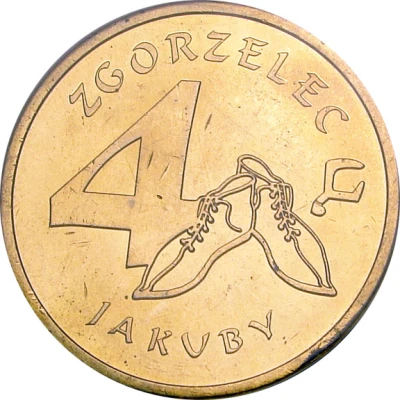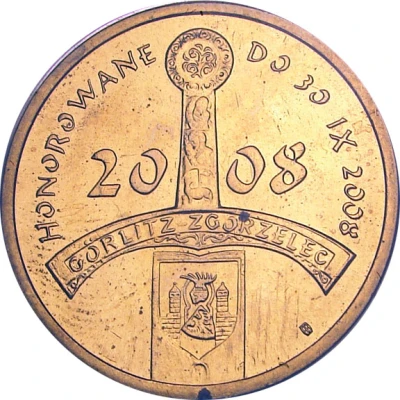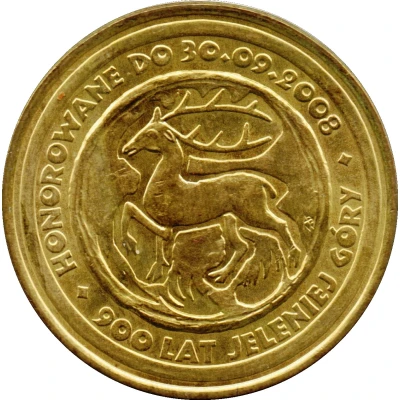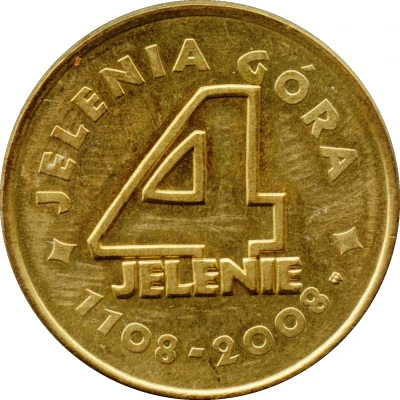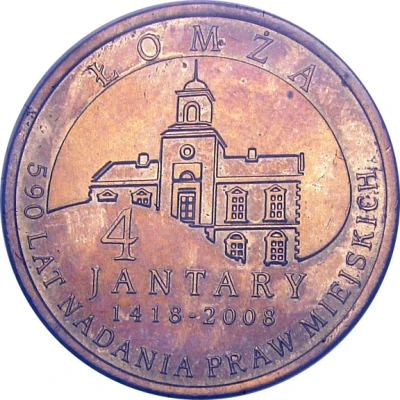
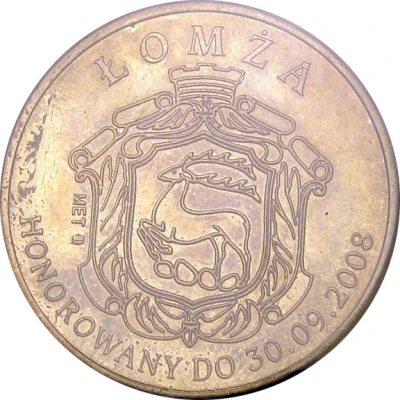

© torontokuba
4 Jantary - Łomża
2008 year| Brass | 8.6 g | 27 mm |
| Location | Poland |
|---|---|
| Type | › Tokens |
| Year | 2008 |
| Value | 4 Jantary |
| Composition | Brass |
| Weight | 8.6 g |
| Diameter | 27 mm |
| Thickness | 2 mm |
| Shape | Round |
| Technique | Milled |
| Orientation | Medal alignment ↑↑ |
| Demonetized | 30 September 2008 |
| Updated | 2024-11-14 |
| Numista | N#41645 |
|---|---|
| Rarity index | 90% |
Reverse
Coat of arms.
Date.
Lettering:
ŁOMZA
HONOROWANY 30.09.2008
Edge
Plain
Comment
Łomża is a city in north-eastern Poland, approximately 150 km away from the capital, Warsow. It is situated alongside the Narew river and has been in the Podlaskie Voivodeship (province) since 1999. It is the capital of the Roman Catholic Diocese of Łomża since 1925.Łomża is one of the principal economic, educational and cultural centres of north-eastern Masovia as well as one of the three main cities of Podlaskie Voivodeship, with a population of around 65,000 inhabitants.
Łomża was founded around the 10th century, on the site of the present day village called Stara Łomża (Old Łomża). It was first mentioned in official records in the 14th century. Łomża received its municipal rights in 1416, and became an important political and economic center in the mid-16th century.
Polish Prince Bolesław IV the Curly built a palace in Łomża in the 12th century. In 1444 the town was granted an exemption from the transit tax on Narew river contributing to its further development. In the 16th century Zygmunt II August gave Łomża the right to hold great fairs three times a year, similar to Warsaw and Płock. In 1618 a great fire destroyed most of the city, and six years later, an epidemic killed 5,021 persons decimating its population. A series of disasters (including the Swedish invasion and the Cossack raids) resulted in its rapid decline in population.
References to Jewish residents in Łomża date to 1494. A magnificent stone synagogue was built there in 1881 on the initiative of Rabbi Eliezer-Simcha Rabinowicz. The Great Synagogue designed by Enrico Marconi became a centre of the Zionist movement. In 1931, there were 8,912 Jews who lived in the city.
In September 1939, during the joint Soviet and German invasion of Poland, Łomża was largely destroyed by the Nazis (including the Great Synagogue), then held and turned over to the Russians. It remained in the Soviet hands until Operation Barbarossa when, in June 1941, it was taken over by the German forces. On 12 August 1941 a Łomża Ghetto was created in the vicinity of the Old Market Square. Those Jews that did not perish from malnutrition, dysentery or typhus were shipped to Auschwitz for extermination. At the end of 1944, the USSR recaptured the territory, and following the Yalta Conference they ceded the city back to Poland, with population reduced to 12,500 inhabitants.
Price
| Date | Mintage | VG | F | VF | XF | AU | UNC |
|---|---|---|---|---|---|---|---|
| 2008 MW | 50000 | - | - | - | - | - | - |
Values in the table are based on evaluations by sales realized on Internet platforms. They serve as an indication only for 4 Jantary - Łomża 2008 item.
